In this article we’re teaching you how to kayak. We’ll cover everything from essential safety to tips on kayaking for beginners, as well as everything you need to know to gain the confidence to embark on your next kayaking adventure.
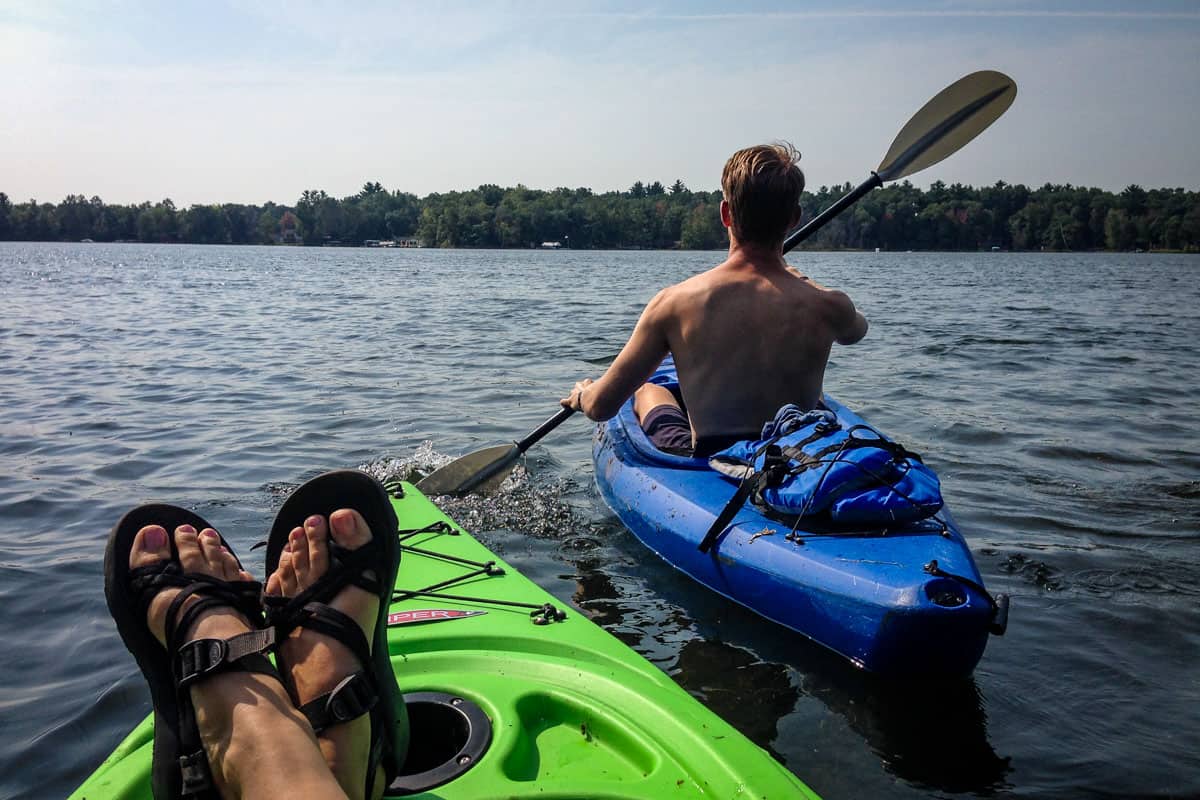
Written by guest author: Adam Jones
Kayaking is a fantastic way to explore the great outdoors, connect with nature, and get a full-body workout.
However, for beginners, navigating the world of kayaking can be overwhelming. With so many different types of kayaks, paddles, and techniques to learn, it can be challenging to know where to start.
That’s why I have created this comprehensive guide on how to kayak to help you get started.
Whether you’re looking to paddle on calm lakes or tackle raging rapids, this guide will provide you with all the information you need to get started. So, grab your paddle, and let’s jump into these tips on kayaking for beginners!
Kayaking for Beginners Guide
- What to wear kayaking
- Essential kayaking gear
- Types of kayaks
- How to hold a kayak paddle
- Basic paddle strokes
- How to launch and exit you kayak
- Essential safety tips
- Kayaking for beginners FAQs

What should you wear while kayaking?
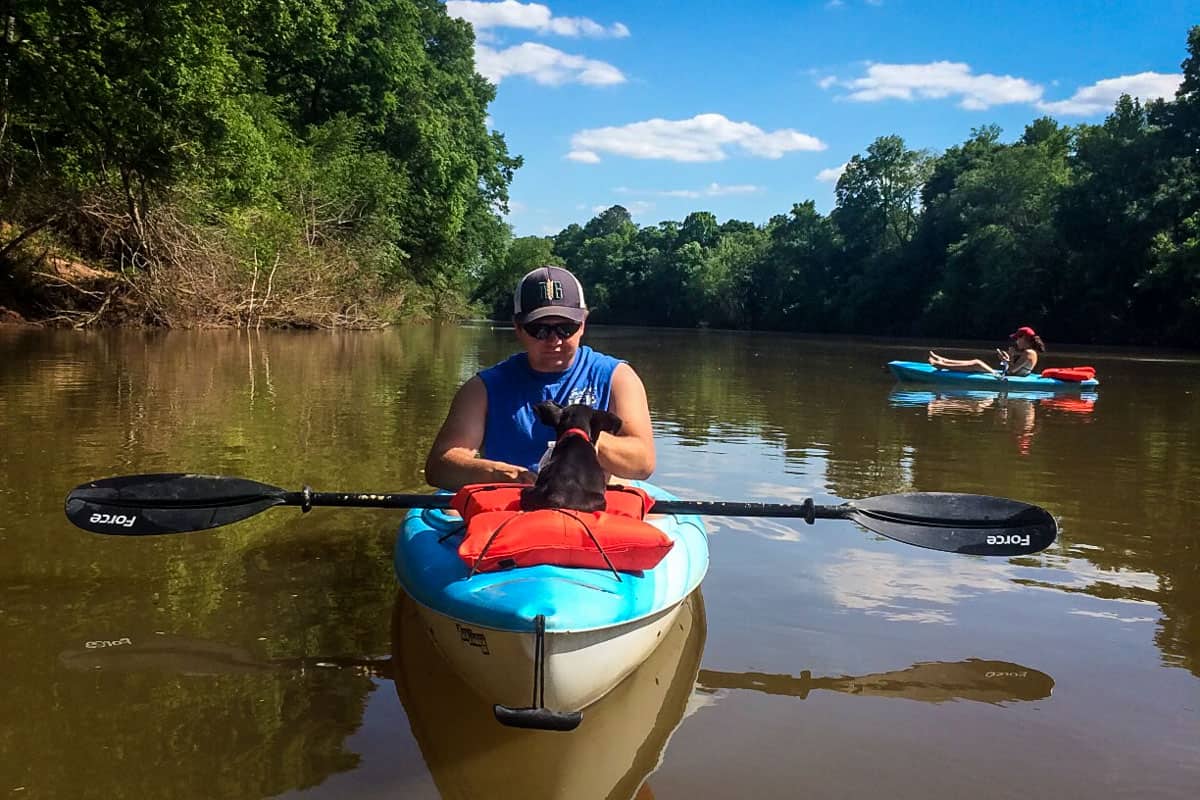
When learning how to kayak as a beginner, figuring out what to wear can be a bit confusing. Don’t worry, I’ve got you covered! I’ll help you choose the right clothing and accessories for a comfortable and enjoyable kayaking trip.
Dress for the right type of kayaking
Just like any other outdoor activity, it’s important to dress appropriately for the kayaking conditions you’ll be facing.
Whether planning a leisurely paddle on calm waters or an adrenaline-pumping whitewater adventure, choosing the right clothing can make all the difference in your comfort and safety.
For whitewater kayaking, you’ll need to wear a dry suit, which is designed to protect you from the cold water. You should also invest in specialized equipment such as a helmet and lifevest.
For flat water and ocean kayaking, you can usually get away with wearing regular clothes like shorts, T-shirts, and light jackets. However, you should always wear a life vest to stay safe.
Dress for the water conditions
Dress for the water conditions and not the weather conditions. This is very important.
For example, if it is 75° F in Alaska and you are practicing how to kayak in a glacier lake, the water temperature is likely around 40° F. You will go hypothermic quickly if you are not dressed for those water temperatures.
In that case, investing in a dry suit, along with synthetic clothing, or wearing a wetsuit is recommended. For water temperatures below 40 degrees, I recommend a full dry suit.
Cold water conditions
When kayaking in cold water conditions, it’s important to wear appropriate clothing to stay warm and avoid hypothermia.
A wet suit or dry suit is a must-have for kayaking in cold water conditions. A wetsuit is made of neoprene and traps a thin layer of water between your skin and the suit. It is then warmed by your body heat.
On the other hand, a dry suit keeps you completely dry and the clothing you wear under the dry suit keeps you warm.
Warm water conditions
When kayaking in warmer water, you can choose clothing that is comfortable, lightweight, breathable, and also provides sun protection.
Swimwear or quick-drying shorts and a t-shirt will keep you cool and comfortable while allowing you to move freely in the kayak. Just remember to wear sunscreen—especially on the tops of your legs and feet if you are wearing shorts.
Water shoes or sandals are great to protect your feet from sharp rocks or other debris in the water while also allowing water to drain quickly.
Psst! We have a guide on what to wear white water rafting that covers a lot of the same clothing as can be used for kayaking.
Essential kayaking gear

Kayaking is an exhilarating experience that demands the right gear. Whether you’re a seasoned kayaker or just starting, having the essential kayaking gear not only ensures your safety but also adds to the overall fun and excitement.
These are the must-have items for your next kayaking adventure.
Kayak
The most essential piece of equipment when learning how to kayak is, of course, the kayak itself.
There are different types of kayaks designed for different activities such as whitewater kayaking, ocean touring, or fishing.
Make sure to research and choose a kayak that’s suitable for the type of paddling you plan to do. I briefly go through the different types of kayaks below, along with their intended purpose below.
Paddle
Your kayak is useless without a paddle! There are many types of kayak paddles available in the market so choose one that’s the right size for your height and boat.
There are different blades and shafts to choose from, so make sure to select one that best suits your kayaking style.
Personal flotation device
Safety is of utmost importance in any outdoor adventure. A personal flotation device (PFD) is a highly recommended piece of gear, regardless of your paddling experience.
A PFD can help keep you afloat if you fall out of the kayak. Make sure to choose one that fits properly and offers the most comfort and flotation for you.
Throw bag
A throw bag is required for kayakers, especially if you plan on doing whitewater.
A throw bag is filled with a rope that can be thrown and used to rescue another kayaker that has fallen out of their boat. Make sure to choose one with a handle so it can easily be attached to your kayak.
Practice and train with your throw bag. You need to know how to use it before you get into a situation where you need it. Your kayaking friends will really appreciate that you have trained in rescues.
Whistle
Whistles are an essential safety item for kayaking, as they can be used to alert other people in the area if you’re in trouble. Make sure to attach it to your life jacket so you always have easy access.
Different types of kayaks

With so many different types of kayaks available, how do you know which one is right for you?
Let’s dive in and explore the different types of kayaks, from recreational to touring, and everything in between!
Flat water
Flat-water kayaks are ideal for calm bodies of water such as lakes, ponds, or slow-moving rivers.
They are typically longer and narrower than other types of kayaks, which makes them faster and easier to paddle, but a little harder to turn. They are great for the relaxed kayaker that just wants to go with the flow or just hang out on a lake.
Whitewater
Whitewater kayaks are designed for more extreme conditions, such as rapids and whitewater rivers. They tend to be shorter and wider than flat-water kayaks, making them more maneuverable, but way less stable.
If you’re just learning how to kayak, I don’t recommend you start in a whitewater kayak. You will likely end up frustrated just trying to learn the basics.
Ocean
Ocean touring kayaks are built for open-water conditions, such as bays and coastal waters.
They are longer than other types of kayaks, which makes them faster and more efficient in the open water. These kayaks often come equipped with a rudder to help you hold a course in large bodies of water where there is likely to be stronger winds
Sit in vs. sit on top
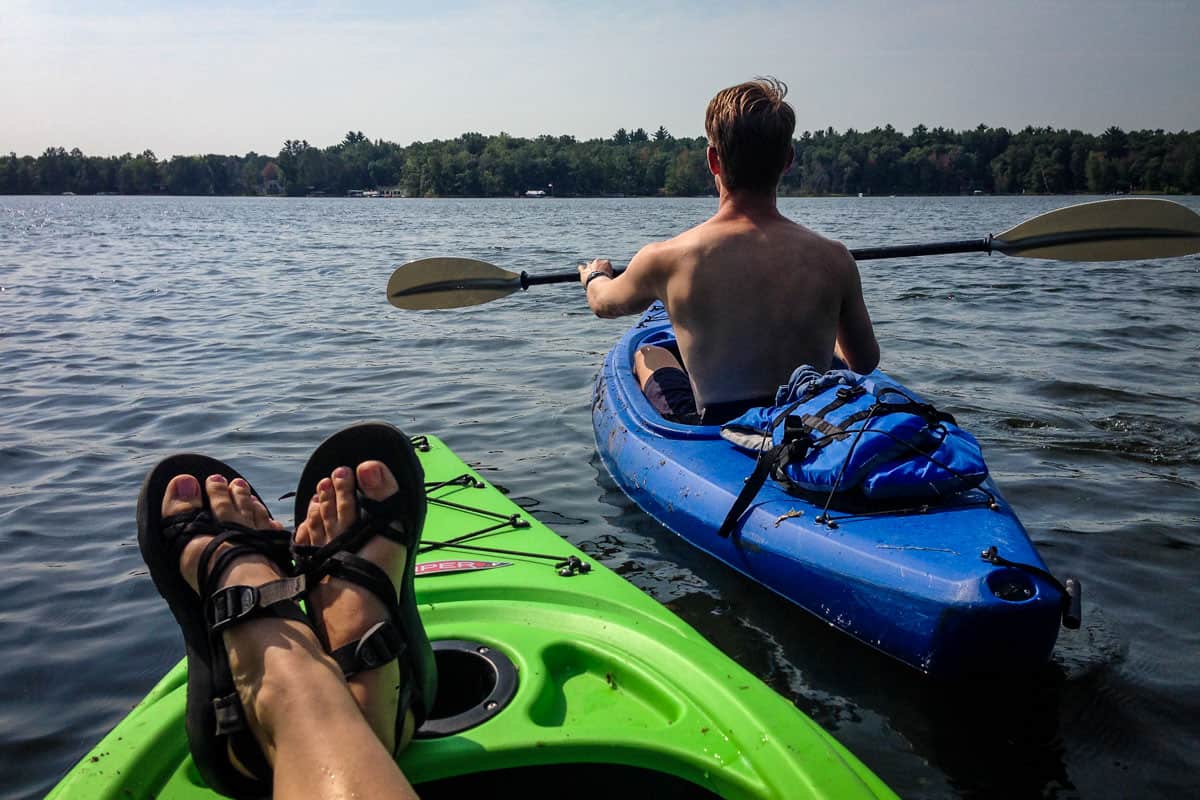
Kayaks are available in both sit-in and sit-on-top designs.
Sit-in kayaks are enclosed kayaks that have a cockpit where the paddler sits inside. They provide a shield from wind, rain, and waves, which can be especially beneficial in cold or rough conditions.
They have adjustable foot pedals and a seat that is typically more ergonomic and comfortable. This can help you stay in control of your kayak for long periods without getting fatigued.
On the other hand, sit-on-top kayaks have an open deck and are more stable. They are generally wider, which makes them easier to maneuver and ideal for recreational paddling, fishing, and paddling in warmer waters.
Sit-on-top kayaks are perfect for beginners as they are less likely to tip over and allow for easy entry and exit. They also offer a more comfortable and open seating arrangement, making them great for longer trips.
How to hold a kayak paddle
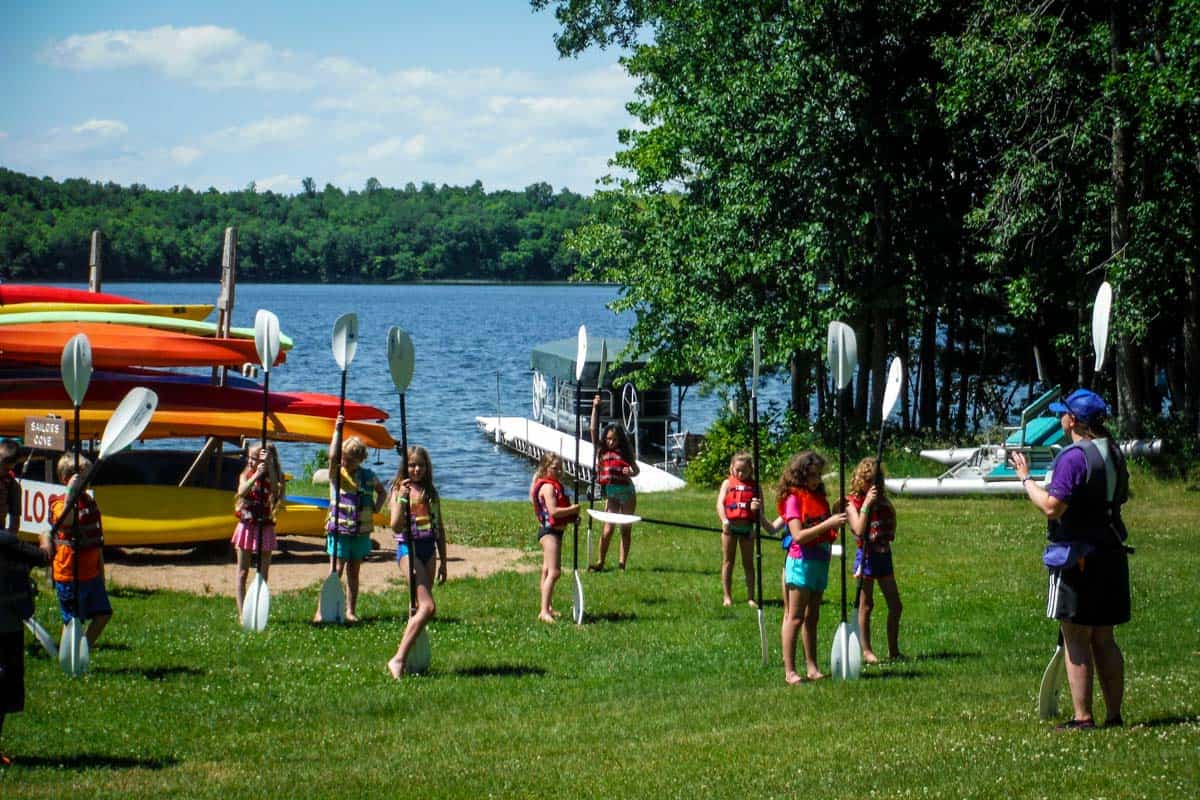
When it comes to kayaking, proper paddle techniques can make all the difference.
Whether you’re a seasoned pro or just learning how to kayak, mastering the art of holding a kayak paddle is key to getting the most out of your paddling experience.
Here are the best practices for holding a kayak paddle like a pro!
How to grip your paddle
To learn how to kayak like a pro, you should get your hand placement and posture right.
Position your dominant hand on the “power grip” of the paddle and keep a firm grasp. Form a “paddler’s box” by placing both hands on the shaft, keeping elbows bent at a 90-degree angle.
Size your paddle
Choose the right size kayak paddle for your height and boat width to ensure an enjoyable kayaking experience. A longer paddle can give more power, but can also drain energy quickly.
For those between 5′ and 5’10”, a paddle between 220-230 cm is recommended. Taller individuals should consider something closer to 230-240 cm.
To ensure you get the right paddle size for you and your boat, check out this sizing chart.
Check your blades
The shape of paddle blades can reveal their type. Asymmetrical blades are great for straight paddling and symmetrical blades have uniform sides. Paddling with parallel blades is easier than feathered blades.
I usually recommend beginners set their paddle in a straight line when trying to learn how to kayak. You can feather them out once you have more experience.
Concave blades offer a powerful pull through the water. Check that the concave sides are facing toward you or in the direction you are pulling the paddle through the water.
Proper hand placement is essential, with knuckles facing up and the shorter side of each blade facing downward.
The basic paddle strokes in kayaking for beginners
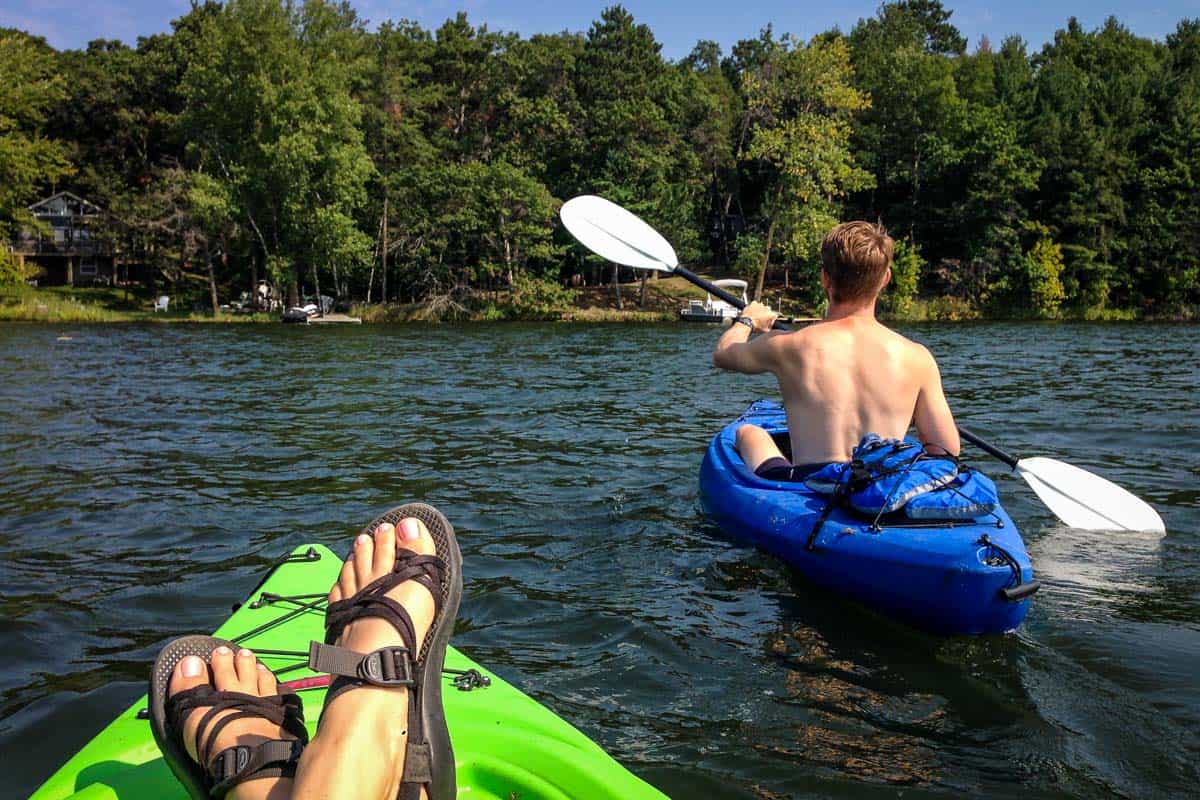
Kayaking is an incredible sport that offers the perfect balance of adventure and relaxation. Mastering the basic strokes can help make your time on the water more enjoyable. Learn how to use each stroke for maximum power and efficiency as you explore new waterways.
The forward stroke
The forward stroke is the most used in kayaking and is great for propelling you through the water.
Begin by holding your paddle parallel to the boat with two hands approximately shoulder-width apart. Keeping your torso straight, pull the blade of your paddle through the water in a swift motion. Use your core muscles for power.
Drop the other paddle blade into the water, as it is now toward the front of the boat, and pull that side swiftly through the water.
The backstroke
The backstroke is used to slow down or stop your kayak.
Start with the blade perpendicular to the boat and your hands shoulder-width apart on the shaft of your paddle. Push the blade away from you while keeping your torso straight, then quickly switch sides and repeat.
This can also be used for maneuvering in tight spaces or narrow waterways.
The sweep stroke
The sweep stroke is used to turn the kayak in a sweeping motion.
Begin by positioning the blade of your paddle perpendicular to the boat, with hands wide apart on the shaft. Push the blade away from you while rotating your torso toward the back of the boat. Switch sides quickly as you bring it back around.
The draw stroke
The draw stroke is a helpful technique for pulling your kayak sideways toward a dock or another boat.
To execute this maneuver, rotate your paddle blade parallel to the kayak and stick the blade into the water. Pull back slowly toward the boat. Lift the blade out of the water and repeat.
If the paddle strikes the side of your boat, the best action is to let go of your top hand and begin again to avoid capsizing.
How to launch and exit your kayak
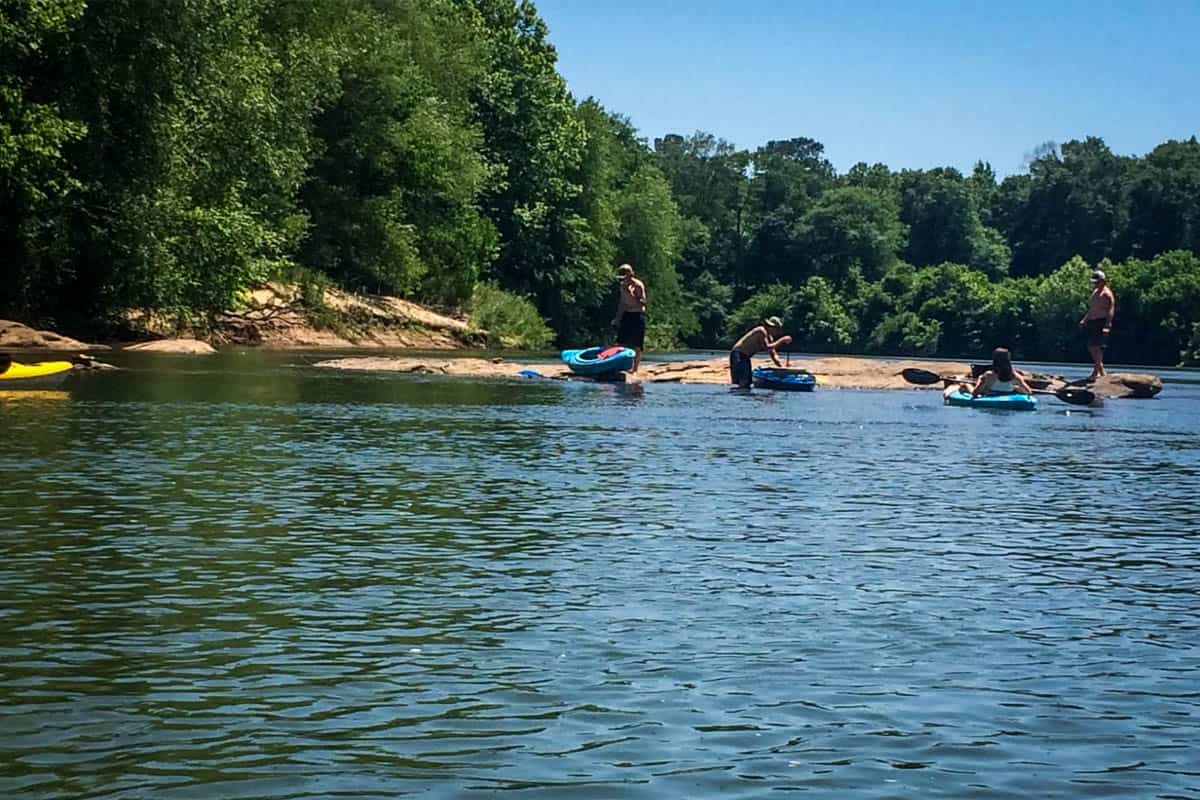
Launching and exiting your kayak safely is one of the first skills you should master. As a beginner, it is important to set yourself up for success by preparing and making good decisions.
Choose the right spot
When launching your kayak, be sure to choose a safe location with plenty of access points to the water. If possible, pick a spot that is sheltered from strong winds and currents.
Look for a spot on the shore that is not too steep. If you choose a spot that is too steep you will likely tip the boat when you slide into the water.
Also, watch out for slippery mud and rocks around your launching site. The last thing you want to do is slip and injure yourself before you even start your trip.
Launch your kayak safely
To launch your kayak, position yourself parallel to the shore, hold onto the grab handles on either side of the cockpit, and slowly wade into deeper water until the kayak fully floats.
Once you’re in, slide your body into the cockpit and keep your knees bent and feet flat on the footrests.
Exit your kayak with caution
When exiting your kayak, use the grab handles for support. Slowly ease yourself out of the cockpit while keeping one hand firmly on the side of the kayak for balance. Gently lower yourself onto a dock or the shore and use your paddle to steady the kayak.
Essential safety tips for kayaking
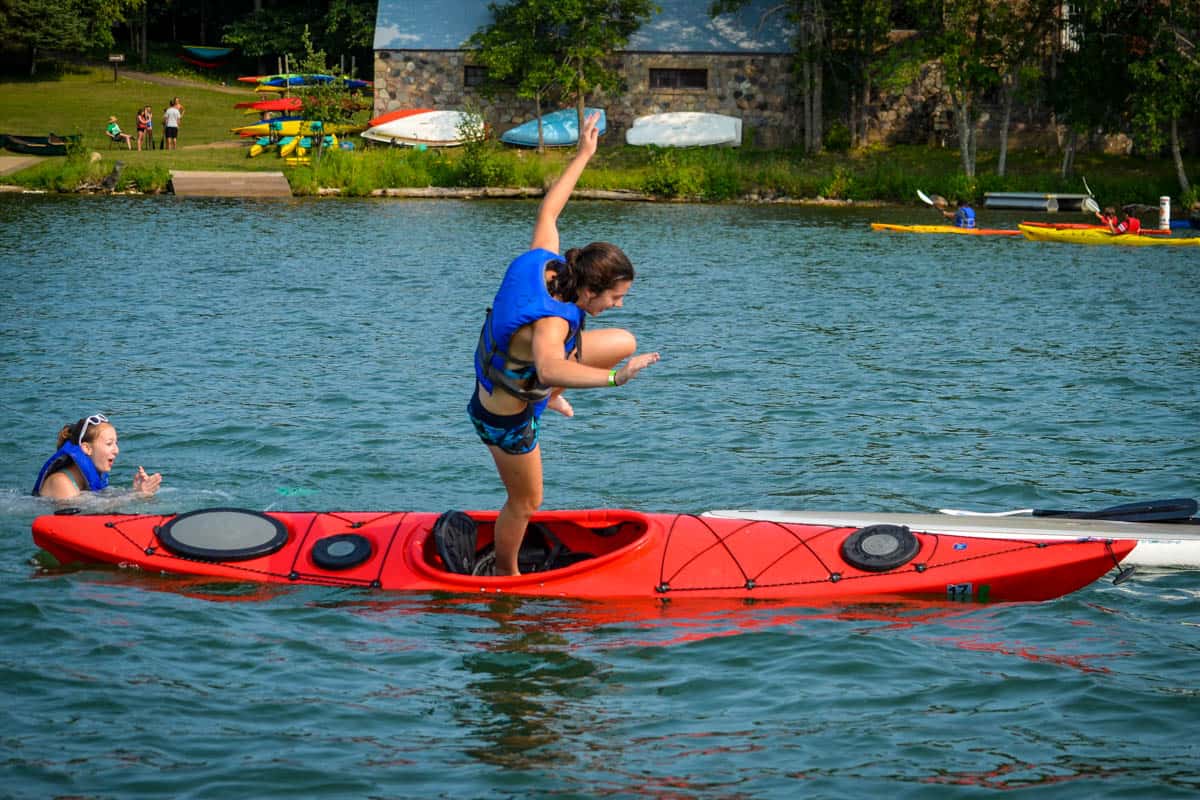
Kayaking is an excellent and rewarding activity, but safety should always be your top priority. To make sure you have the best experience possible, it’s important to learn the basics of staying safe on the water.
Here are some tips that will keep you safe and enjoy every moment of kayaking.
Always wear a PFD
Life jackets come in a variety of sizes and styles, so make sure to find one that fits you properly. Your life jacket should be worn while kayaking to reduce the risk of drowning if you capsize or have an accident.
It is easy to say, “Well, I am a good swimmer, so I do not need a life jacket”.
While this may be true, the life jacket is for when you flip and hit your head on a rock knocking you unconscious. It does not matter how good of a swimmer you are if you are knocked out cold.
It is also recommended that you bring additional safety equipment such as a whistle, signaling device, and a first aid kit.
Kayak with a buddy
It’s always best to practice learning how to kayak with a partner. Not only is it more fun, but it also provides an added layer of safety in the event something goes wrong.
Make sure to inform someone at home about your plans and the route you plan to take so that if anything happens, help can be sent.
Learn how to rescue yourself and others
Knowing how to rescue yourself and others is an important skill to have when kayaking.
Make sure you understand the basics of wet exits, self-rescue techniques, and swift water kayak rescue techniques in case something goes wrong on the water.
It’s also a good idea to take a safety course on how to kayak or practice these skills with experienced paddlers.
Kayaking for beginners: FAQS
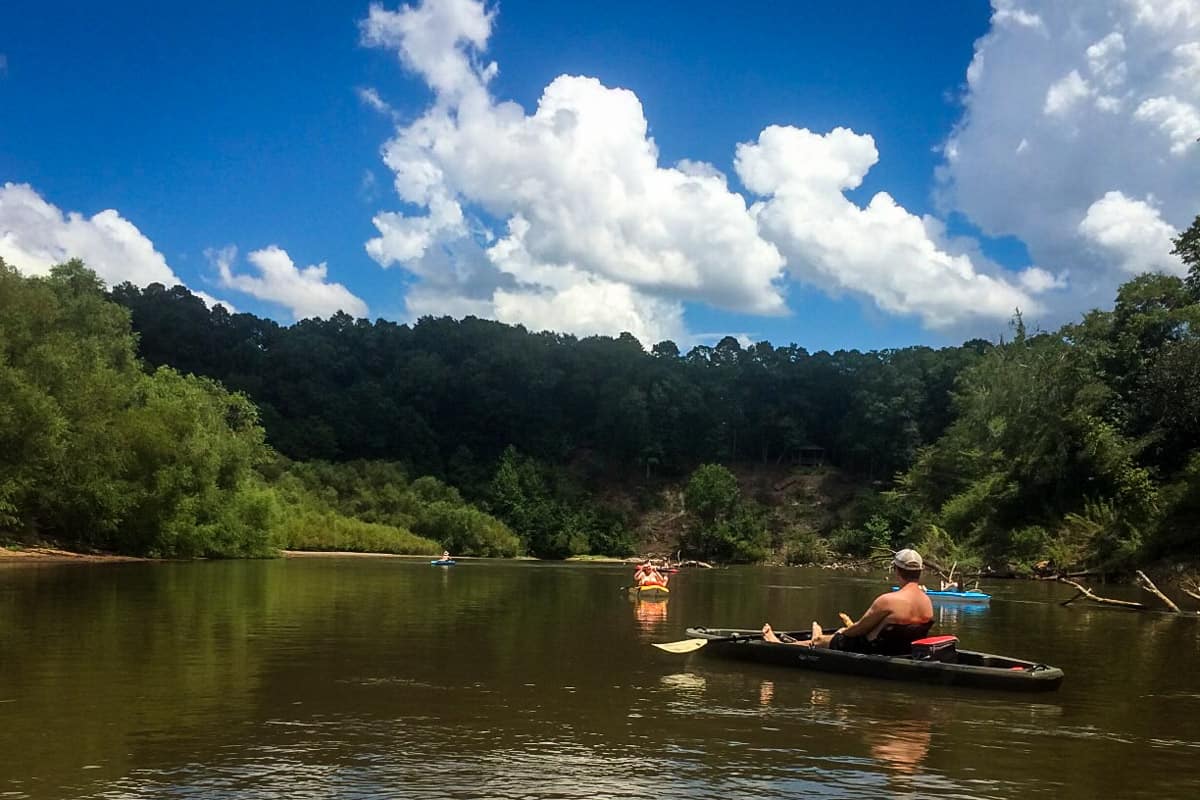
Here are answers to some common questions asked by beginners who are learning how to kayak.
Can you kayak without experience?
Kayaking is a skill that can be learned with proper instruction and practice. It’s important to understand basic paddling techniques, boat turning, self-rescues, and safety equipment before heading out on the water.
Can I learn how to kayak by myself?
Kayaking is a skill that can be easily learned and practiced solo. However, it’s recommended to have an experienced kayaker go along with you.
Online resources and instructional videos can also help, as well as understanding kayaks, paddles, and safety equipment. With practice and the right gear, anyone can enjoy kayaking.
Where should beginners first learn how to kayak?
Beginners should always start kayaking in calm flat water such as a slow-moving river, lake, or bay. This will give you the best opportunity to learn the basics without getting overwhelmed by more challenging elements like wind, waves, and currents.
When possible, it is also recommended to take a lesson from an experienced instructor before hitting the open water.
Can a non-swimmer learn how to kayak?
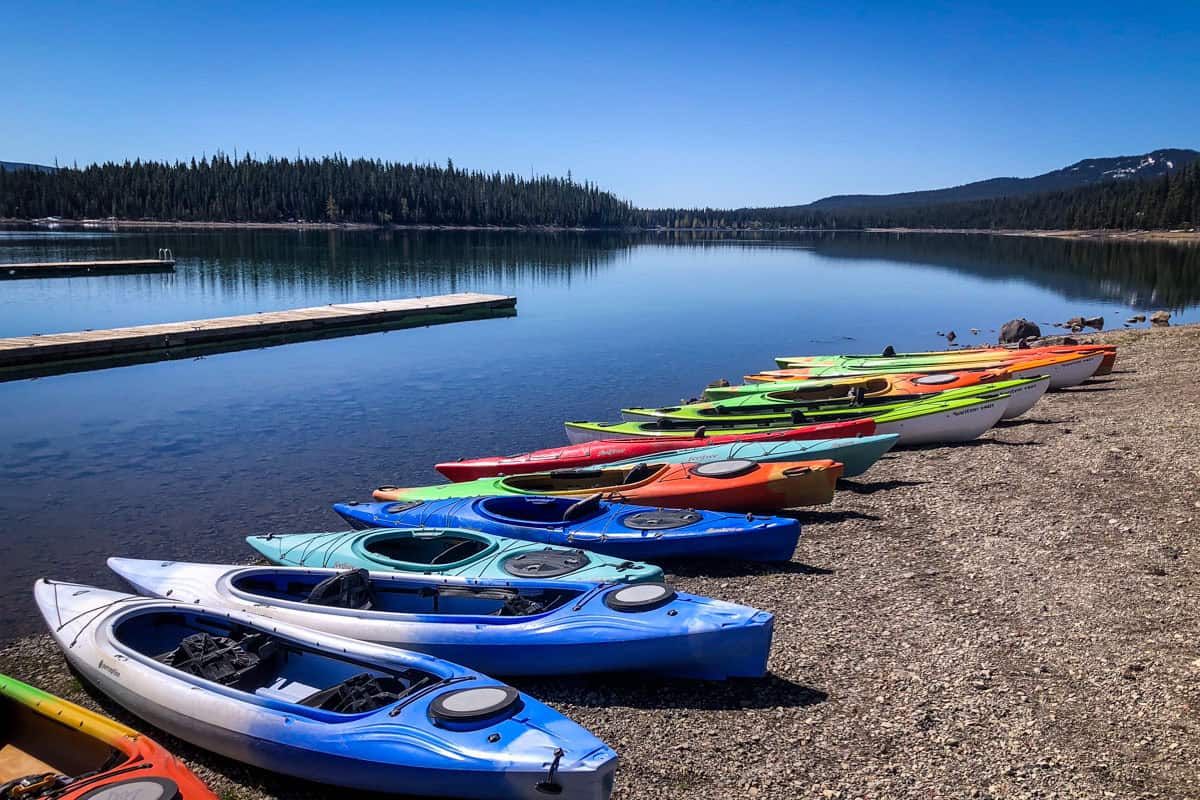
Kayaking is a fantastic water activity, even for non-swimmers. However, to ensure your safety, it’s essential to wear a well-fitted life jacket, stay within your comfort zone, and have an experienced paddler accompany you.
Familiarizing yourself with self-rescue techniques such as wet exits. Capsizing drills can also help you feel more secure on the water.
With proper guidance and regular practice, non-swimmers can enjoy the splendor of kayaking without compromising their safety.
What should you not do while learning how to kayak?
When kayaking, it’s important to be aware of your surroundings and be cautious.
- Do not paddle in waters that are moving too fast for your skill level.
- Avoid paddling at night or during storms, and never enter a restricted area as this can put you in danger.
- Always take necessary precautions when fishing from a kayak.
Respect the rules and regulations of the area you are in to ensure your safety and that of others.
Wrap Up
Kayaking is a fun and exciting activity, but it’s important to take the necessary precautions to stay safe. Always wear a properly fitted life jacket, practice paddling with an experienced partner, learn self-rescue techniques, start on calm waters, and avoid restricted areas.
With the right safety measures in place, you can enjoy the wonders of kayaking without any risk.
So, get out there and learn how to kayak so you can begin exploring more. Have fun and stay safe!

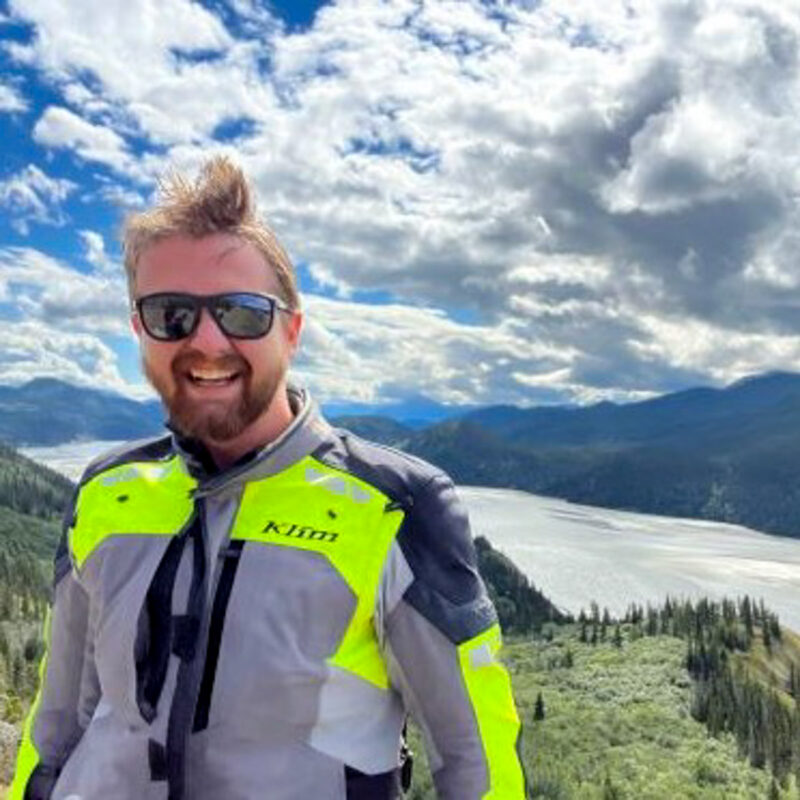
About the author
Adam Jones lives in Alaska, where the outdoors is king. He loves to fly airplanes, ride motorcycles, and do anything else outdoors. An adventurer at heart, Adam finds joy in exploring new places and taking on new challenges. He started blogging at adamchristopherjones.com as a way to share his outdoor adventures with others. Adam hopes to continue exploring the world and sharing his experiences with everyone who wants to come along.

You may also like…
- Best Outdoor Apps for Camping, Hiking & Road Trips
- What to Wear Whitewater Rafting
- 100 Best Adventure Quotes (+ graphics!)
- How to Get Outdoor & Camping Gear for Cheap!
Save this article to Pinterest for later!
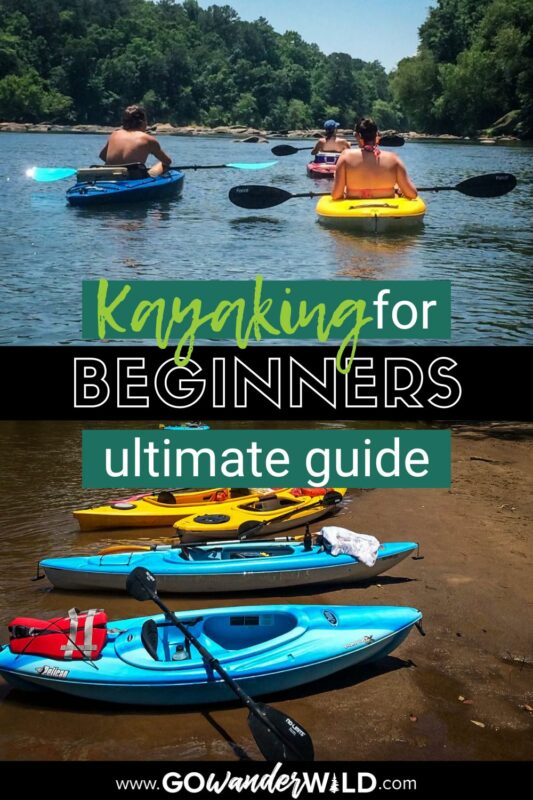
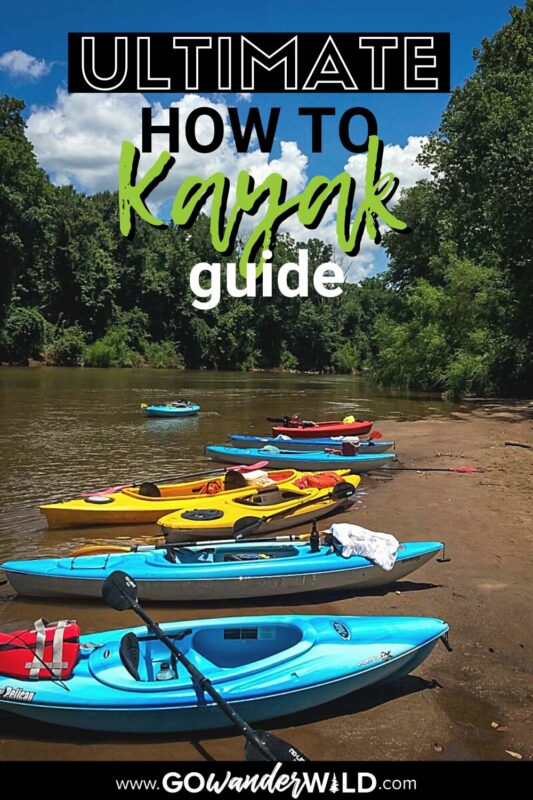
We want to hear from you!
Do you have any other questions about what to wear or preparing for a whitewater rafting trip? Comment below and we’ll do our best to get you answers!

